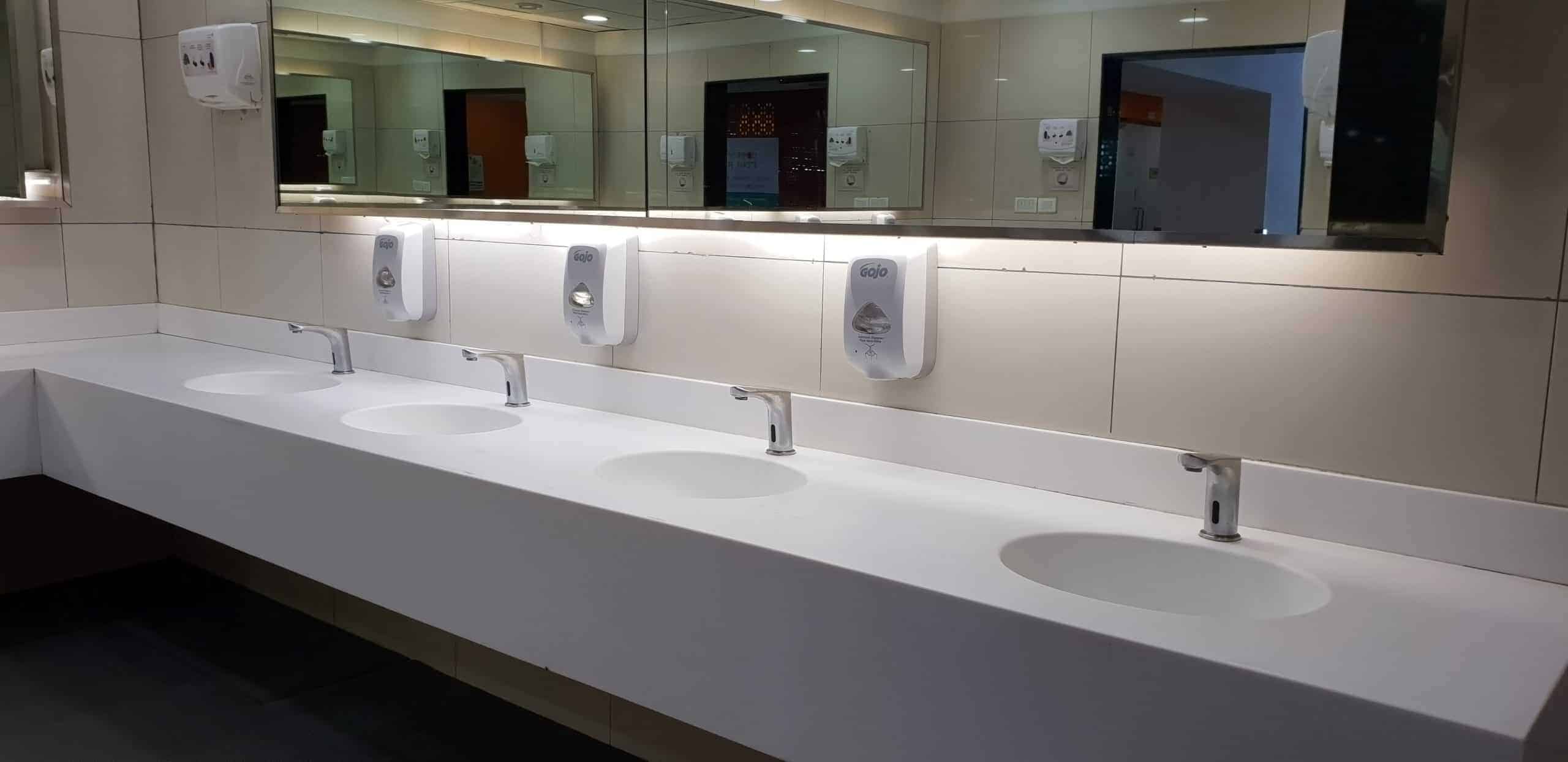A washroom is a place where we clean and freshen up, but it’s also the best spot for viruses and germs to spread because it’s a high-traffic, high-humidity environment. With the discovery of the new version Omicron, several precautions must be taken to avoid the washroom from becoming a breeding ground for such viruses and bacteria. Washroom hygiene is regarded as critical, particularly in this epidemic era.
1. Build Awareness & Educate
We can reduce the possibility of physical contact among users by raising awareness among users and installing social distancing markers on washroom floors. The goal is to get users to always be on the lookout when using washrooms, especially if they are public.
Education posters can also be used as reminders. Such an applicable example would be reminding visitors to wash their hands with plenty of soap and water for at least 20 seconds for an effective cleaning that removes any lingering pathogens on our hands. This is a WHO golden rule that we should all follow. Anything less is not recommended and may endanger not only our own health but also the health of those around us.
2. Minimise Contact with Objects
To reduce unnecessary contact, we as business owners should provide the necessary equipment for our visitors to use.
The use of an automatic hand soap dispenser is an example of such equipment. Hand soap is regarded as the most important consumable in hand washing, and we should provide an automatic machine that dispenses the soap without the need for manual labour.
A motion-sensing faucet is also an excellent way to accomplish this. It should be installed in every washroom basin to prevent the spread of viruses and bacteria, providing users with peace of mind. A proximity sensor mechanism in an automatic faucet opens and closes its valve for water flow in response to the presence of a user’s hand in close proximity.
3. Reduce Airborne Particles
3.1 Avoid Using Hand Air Jet Dryers
Undeniably, hand air jet dryers are now considered to be mainstream and the popular choice among business owners and users due to its convenience and cost when compared to the traditional way of drying with a paper towel obtained through a paper towel dispenser. Truth to be told, hand air jet dryers are doing more harm than good for us in the washroom.
What was supposed to be a step forward in hygiene becomes a step backward, especially since we are still dealing with a global pandemic outbreak. Hand air jet dryers are designed for convenience and cost rather than practicality, which is not in our favour because it jeopardises our health. We recommend that instead of using the hand air jet dryer, we provide our visitors with paper towels and their respective dispensers. You may read more in detail in our separate blog post here, titled “The Unforeseen Dangers of Hand Air Jet Dryers”.
3.2 Close The Lid While Flushing
To reduce the risk of contracting the deadly virus, washroom users should establish and follow S.O.P, such as closing the lid when flushing the toilet. Dr. Charles Gerba coined the term “Toilet Sneezing Effect” while conducting research on the spread of bacteria when a toilet is flushed. Every time a user flushes the toilet, a “Toilet Plume” is released into the air, which is essentially an invisible cloud of bacteria. Toilets can be contaminated after several flushes, and the bioaerosol produced by all that swirling and splashing of contaminated water may have played a role in the spread of viruses. Virus particles can remain airborne for up to 24 hours and travel up to 8 feet away from the toilet.
3.3 Ensure Presence of Ventilation
Air ventilators should be installed in washrooms to disperse airborne viruses and bacteria outside. This is especially true in washrooms that are small and have limited air flow. Improving the safety of our workers and visitors by improving poorly ventilated indoor cramped environments should be a top priority.
4. Aditional Cleaner Task & Scheduling
4.1 Spraying of Surface Disinfectant
There is only so much we can do to reduce airborne bacteria and cross contamination, but there is a product called surface disinfectant that can further eliminate these viruses and bacteria from surfaces. Simply spray it on all surfaces in the restroom with a mist sprayer!
4.2 Check, Refill Hand Soap & Paper Towels
Cleaners should be assigned the task of checking and refilling depleted hand soap and paper towel dispensers on a regular basis. Washroom users can perform an efficient hand wash while not producing any additional airborne bacteria due to the use of paper towels. This ensures that there is a constant supply of soap and paper, reducing the amount of time spent in the washroom as well as the crowding of users.
Conclusion
There are numerous ways to protect our safety and well-being when using the washroom, as mentioned above. Hygiene and S.O.P. must be maintained in order to slow the curve while we wait for this pandemic age to pass. As an added precaution when leaving the premises, automatic hand sanitizer dispensers should be placed near the washroom doors.
Contact us at Upekkha to get a free consultation and your washroom hygiene and safety maintenance programme today!

